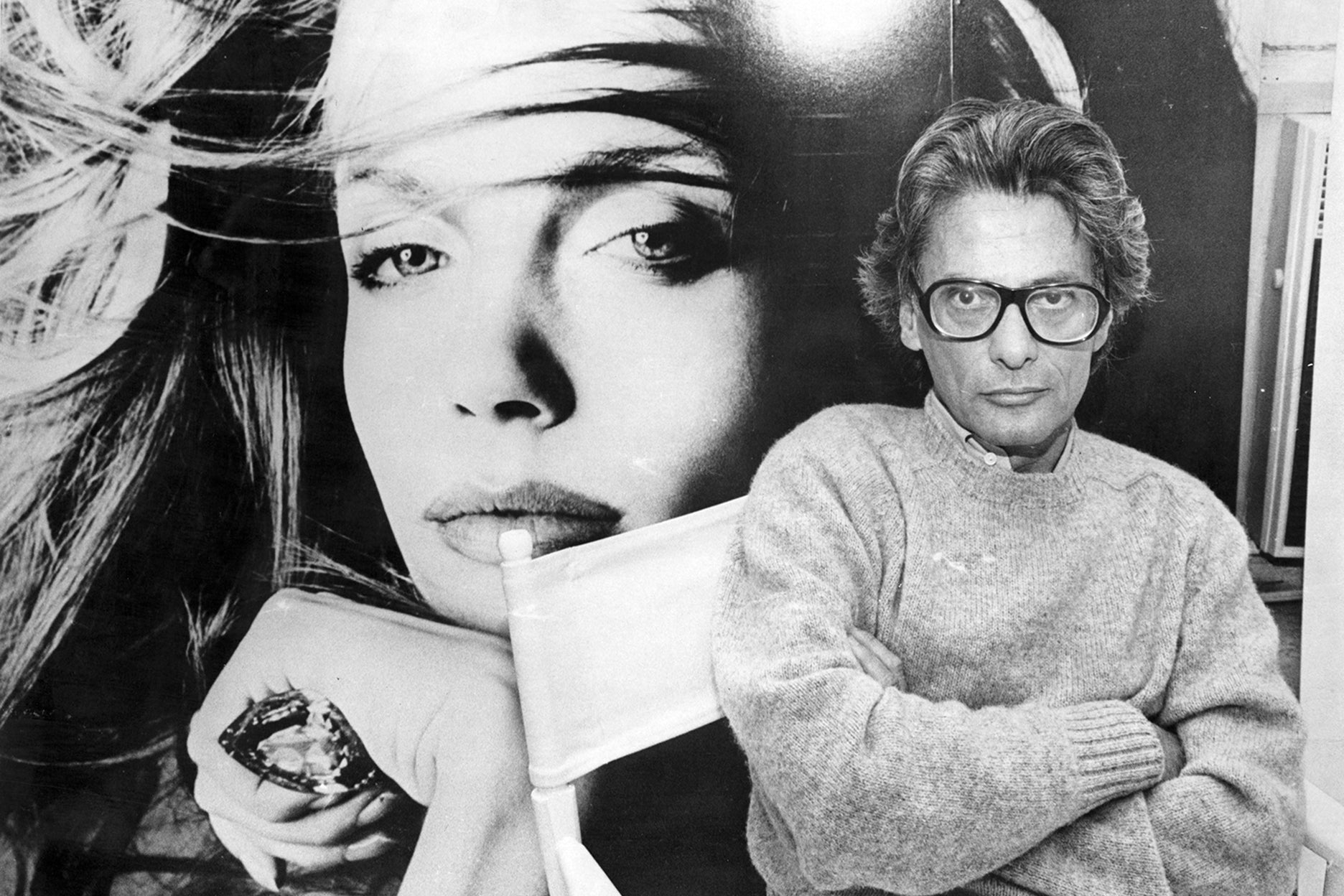
For six decades, Richard Avedon (1923-2004) reigned supreme, reinventing the language of photography across fashion and portraiture. At a time when a hard line was drawn between commercial work and fine art, he masterfully transformed magazines into intimate stages of beauty, fantasy, and glamor, revolutionizing the role of photography across advertising and editorial without ever missing a beat.
For six decades, Richard Avedon (1923-2004) reigned supreme, reinventing the language of photography across fashion and portraiture. At a time when a hard line was drawn between commercial work and fine art, he masterfully transformed magazines into intimate stages of beauty, fantasy, and glamor, revolutionizing the role of photography across advertising and editorial without ever missing a beat.
A native New Yorker, Avedon enjoyed a prophetic start working with friend and classmate James Baldwin at The Magpie, the DeWitt Clinton High School newspaper, in the late 1930s. He went on to study poetry and philosophy at Columbia University for a year before dropping out and working as a photographer for the Merchant Marines. Taking a page from his father who owned and operated Avedon Fifth Avenue, a flourishing women’s dress shop, he went into business for himself, opening a photo studio in 1946.
That same year, Avedon got his start at Harper’s Bazaar with a nod from legendary art director Alexey Brodovitch, who insisted the magazine publish the young photographer’s highly unconventional pictures of models frolicking on the beach, with nary a glove, shoe, or stocking in sight at a time when bare feet were simply never shown. “Those candid snapshots were in direct contrast to what was being done. I came in at a time when there weren’t any young photographers working in a free way,” said Avedon, who went from zero to 100 at record speed.
In Avedon’s hands, the camera was more than a mere machine: it was an instrument no different from the violin or paintbrush. His vision continuously evolved, reflecting the times in which he lived with the perfect blend of elegance and insouciance. “Fashion is about who you want to be, not who you are, it’s therefore artificial” he said. “It’s funny and it’s sad and it’s a little crazy. But I would want those elements to be in any photograph I took.”
Avedon’s timing was impeccable, arriving on the scene just as fashion was on the upswing against a revolutionary backdrop of the “New Look” sweeping Paris, American sportswear taking root in New York, and modern designs of London's Carnaby Street. With the postwar boom, fashion magazines entered a golden age, introducing the first generation of supermodels, including Dovima, Suzy Parker, Dorian Leigh, and Carmen Dell'Orefice, who skyrocketed to international renown in his indelible photographs of mid-century luxury and refinement.
By 1957, Avedon’s influence had struck Hollywood, with his fame and reputation inspiring the character played by Fred Astaire opposite Audrey Hepburn in the 1957 film Funny Face. As chief photographer at Bazaar, and then in 1962 staff photographer for Vogue, he crafted the image of American style that was both classic and au courant, elusive and accessible by capturing the transformative powers of motion and emotion on film.
Recognizing the surface as the subject of the photograph, Avedon understood the inherently fictional qualities of a medium that copies the visible world. Drawn to space where realism and imagination became inextricably intertwined, he began using swirls and blurs of motion to hypnotic effect, capturing the captivating experience of movement within the stillness of a single image.
“I began trying to create an out-of-focus world – a heightened reality, better than real, that suggests, rather than tells you,” Avedon said. “Maybe the fact that I’m myopic had something to do with it. When I take off my glasses, especially on rainy nights, I get a far more beautiful view of the world than twenty-twenty people get. I wanted to reproduce this more poetic image that I was privately enjoying.”
Adopting Brodovitch’s masterful use of “white space,” Avedon worked in the studio against a white seamless to evoke the limitless possibilities of a painter’s canvas. The result became his signature across fashion, advertising, and portraiture that readily lent itself to his gift for readily distilling crafting archetypes much like his contemporary, Andy Warhol. “I always prefer to work in the studio,” Avedon said. “It isolates people from their environment. They become in a sense… symbolic of themselves.”
For Avedon, the symbolic realm was an expansive, inclusive space. Working with advertising clients like Calvin Klein, Gianni Versace, and Revlon, he elevated designers and models to the pantheon of celebrity, turning them into household names or even notoriety, as with 15-year-old Brooke Shields, who appeared along the tag line “Nothing comes between me and my Calvins.”
But for Avedon, his groundbreaking series, In the American West, proved the most revelatory body of work. Made between 1979 and 1984 as he was approaching 60, he traveled to 189 towns in 17 states and Canada, visiting ranches, rodeos, jails, truck stops, mental hospitals, and slaughterhouses to create a contemporary portrait of the American West that explores the place where mythos and autobiography mingle and merge.
“A portrait isn’t a fact but an opinion—an occasion rather than a truth,” said Avedon who used the camera to grapple with questions of identity, individuality, love and loss, control, independence, discovery, and expression. His legacy remains unsurpassed, continuing to inspire new generations of artists to craft kaleidoscopic visions of beauty and depth as radical, daring, and chic as the times we live in.
WRITTEN BY Miss Rosen
#ARTs